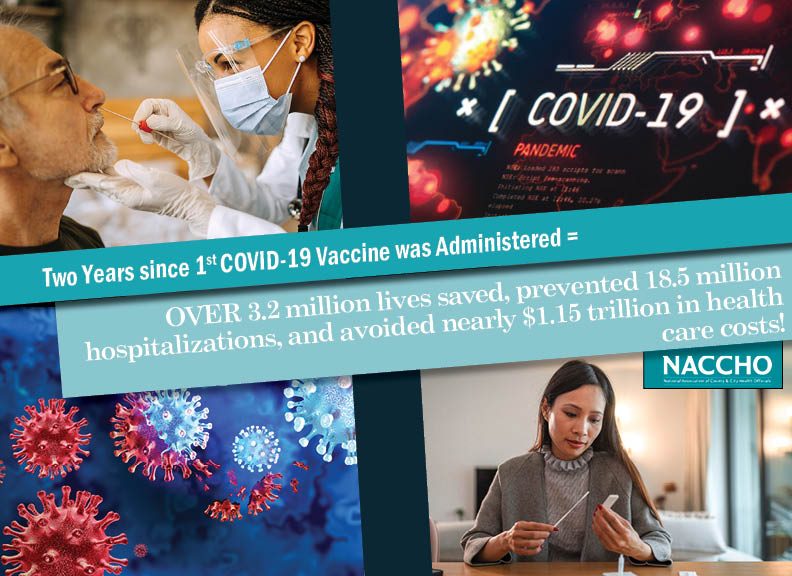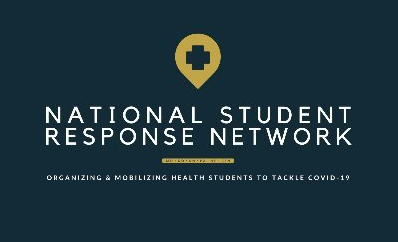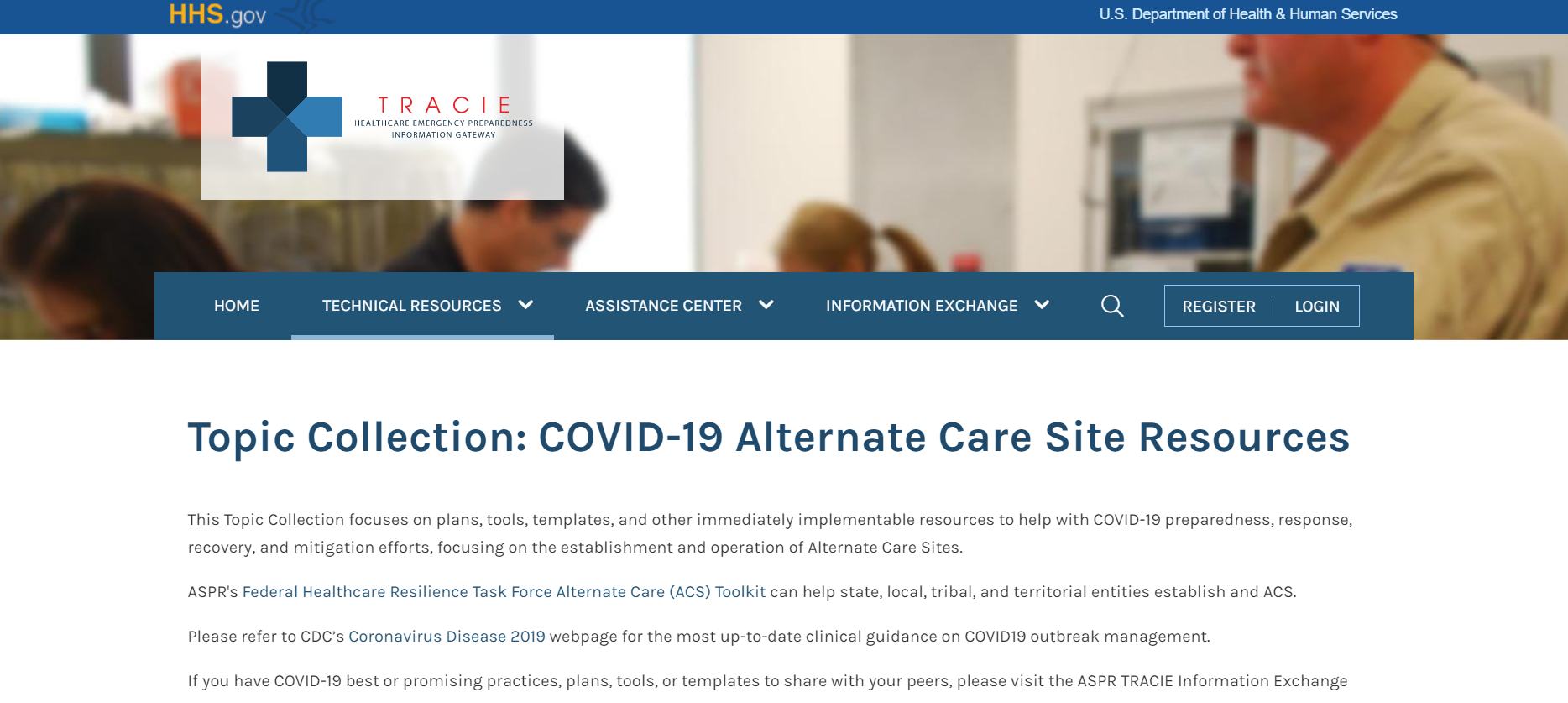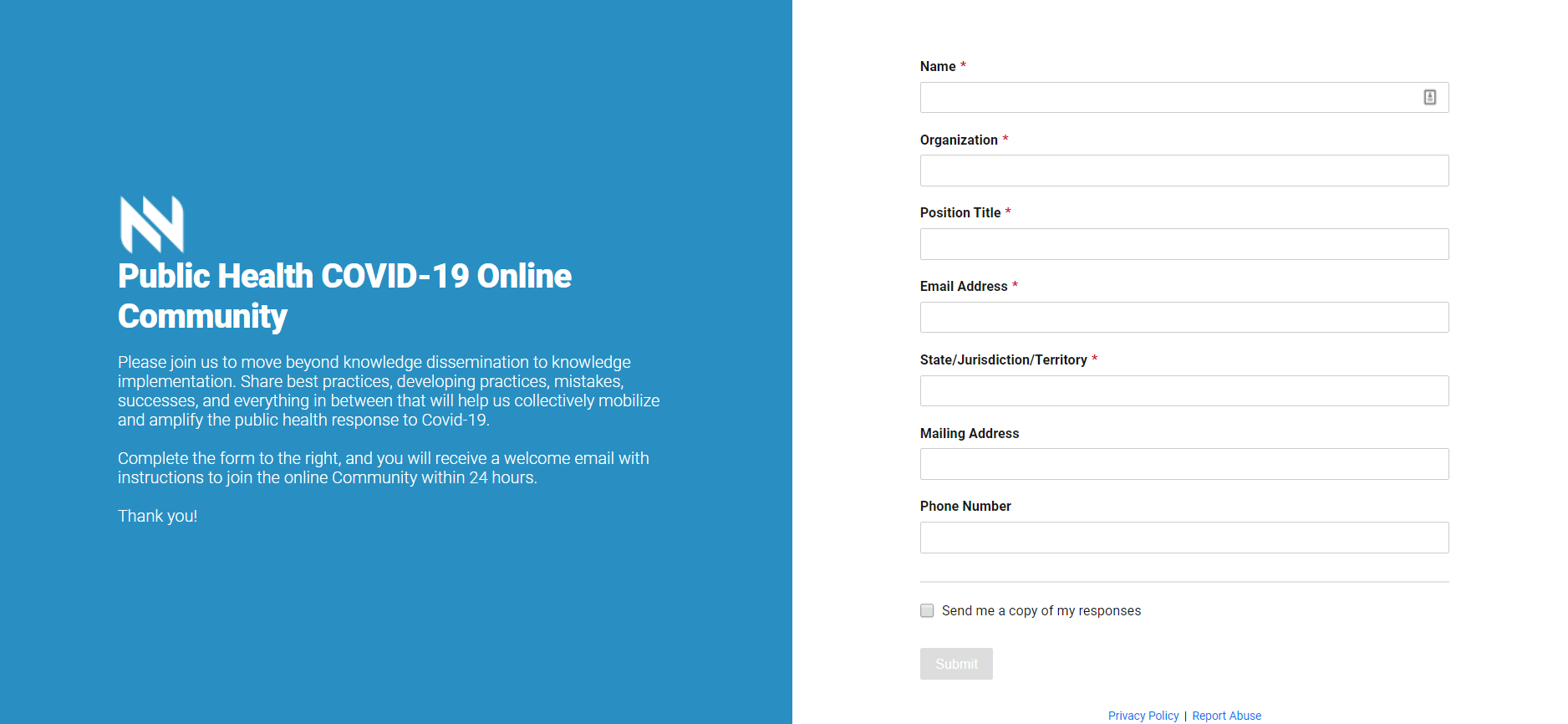Popular Categories
Submit Tools to Project Public Health Ready’s Online Toolkit
NACCHO needs your help! In an effort to provide the best technical assistance and resources to local health departments NACCHO’s...
Jan 26, 2016 | Mary Hodges
Measuring Mass Fatality Preparedness – How Does Public Health Stand Up?
Many of the catastrophic hazards that LHDs plan for have serious potential to become mass fatality events. Even in the most...
Jan 13, 2016 | Rachel Schulman
The Role of Public Health in Terrorism and Active Shooter Preparedness and Response
In light of the recent events in Paris and San Bernardino, CA, active shooter and terrorism situations have dominated global media and...
Jan 06, 2016 | Mary Hodges
Hurricane and Flooding Preparedness Resources
The arrival of hurricane season and potential impact of Hurricane Joaquin serve as a reminder that the 2,800 local health departments...
Aug 28, 2015 | Admin
Partnerships between Local Health, FBI Lead to Greater Chemical Incident Preparedness
By Katie Regan, Communications Specialist, NACCHO Whether terrorist or criminal in nature, intentional or accidental, a chemical...
Aug 11, 2015 | Katie Regan
Partnerships Between Local Public Health and Poison Control Lead to Greater...
The link between local public health departments and poison control centers is obvious, although not always well executed. Because of...
Jun 30, 2015 | Katie Regan
Looking Back to Move Forward: An Interview with Dr. Rahul Gupta
This is part of a series of interviews with local health department staff who will present at the 2015 Preparedness Summit. Dr. Rahul...
Mar 25, 2015 | Geoffrey Mwaungulu, Jr.
NACCHO Study Examines Local Role in Large-Scale Chemical Incident Response
NACCHO, in collaboration with the Department of Homeland Security Office of Health Affairs, Chemical Defense Program, has initiated an...
Mar 23, 2015 | Katie Regan
New Evidence-Based Planning Guidance for Patient Decontamination Released
Every day large quantities of hazardous materials are made, transported, stored, and used in communities throughout the United States....
Dec 19, 2014 | Justin Snair
Submit Tools to Project Public Health Ready’s Online ToolkitNACCHO needs your help! In an effort to provide the best technical assistance and resources to local health departments NACCHO’s Preparedness Planning, Outcomes and Measurement (PPOM) Workgroup is seeking to expand and update the Project Public Health Ready online toolkit. This toolkit serves as a repository of best practices, templates, and samples for a variety […] Jan 26, 2016 | Mary Hodges |
Measuring Mass Fatality Preparedness – How Does Public Health Stand Up?Many of the catastrophic hazards that LHDs plan for have serious potential to become mass fatality events. Even in the most well-prepared communities, events such as pandemics, chemical spills, radiation releases, mass shootings, and acts of terrorism can still result in extremely high death tolls. Moreover, it doesn’t necessarily take a large number of deaths […] Jan 13, 2016 | Rachel Schulman |
The Role of Public Health in Terrorism and Active Shooter Preparedness and ResponseIn light of the recent events in Paris and San Bernardino, CA, active shooter and terrorism situations have dominated global media and the minds of many Americans. Preparing for and recovering from these incidents is typically seen as the job of local and Federal law enforcement, but local public health is deeply involved in the […] Jan 06, 2016 | Mary Hodges |
Hurricane and Flooding Preparedness ResourcesThe arrival of hurricane season and potential impact of Hurricane Joaquin serve as a reminder that the 2,800 local health departments across our nation stand ready to help protect residents and families from all sorts of natural disasters and to play a vital role in any recovery efforts. Local health departments are life-saving first responders […] Aug 28, 2015 | Admin |
Partnerships between Local Health, FBI Lead to Greater Chemical Incident PreparednessBy Katie Regan, Communications Specialist, NACCHO Whether terrorist or criminal in nature, intentional or accidental, a chemical incident is a possibility all local public health departments face. Therefore, public health should ensure response procedures and preparedness efforts are in place before an event happens to make sure their community is resilient. As first responders, it […] Aug 11, 2015 | Katie Regan |
Partnerships Between Local Public Health and Poison Control Lead to Greater Community Health LiteracyThe link between local public health departments and poison control centers is obvious, although not always well executed. Because of the sensitive nature of poison control data, and the lack of bureaucratic connection between the two organizations, it can sometimes be hard to share information. It can sometimes even be hard to remember to share […] Jun 30, 2015 | Katie Regan |
Looking Back to Move Forward: An Interview with Dr. Rahul GuptaThis is part of a series of interviews with local health department staff who will present at the 2015 Preparedness Summit. Dr. Rahul Gupta, MD, MPH, West Virginia State Health Officer and Commissioner for the West Virginia Bureau of Public Health, previews his workshop, West Virginia Water Crisis – A Look Back: Moving Forward to […] Mar 25, 2015 | Geoffrey Mwaungulu, Jr. |
NACCHO Study Examines Local Role in Large-Scale Chemical Incident ResponseNACCHO, in collaboration with the Department of Homeland Security Office of Health Affairs, Chemical Defense Program, has initiated an effort to understand the role local health departments play in responding to large-scale chemical incidents. As part of that effort, NACCHO last month hosted a one-day focus group with local health departments and community response representatives […] Mar 23, 2015 | Katie Regan |
New Evidence-Based Planning Guidance for Patient Decontamination ReleasedEvery day large quantities of hazardous materials are made, transported, stored, and used in communities throughout the United States. With nearly 25 million people living near chemical facilities in the nation, many could be exposed to chemicals following a catastrophic incident. To protect health and save lives in such catastrophic incidents, first responders, medical providers, […] Dec 19, 2014 | Justin Snair |
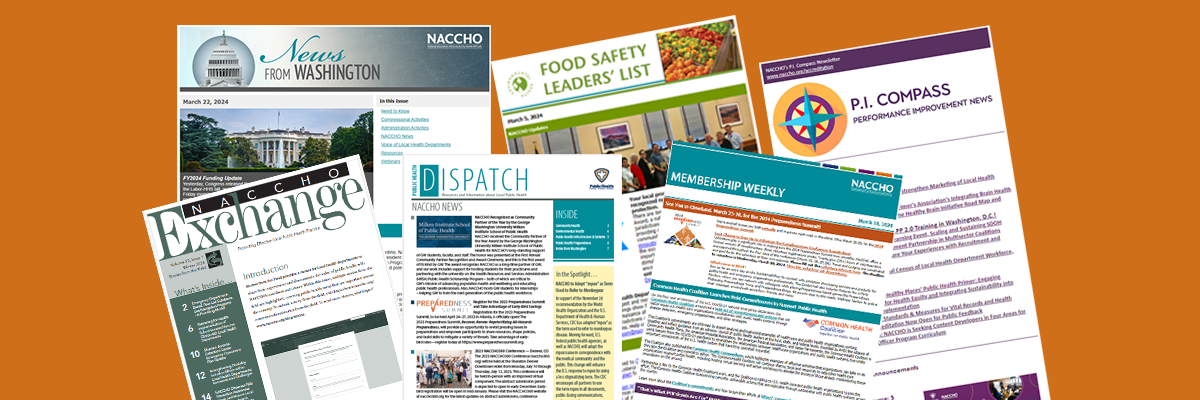
Subscribe Today
Sign Up for the E-mail Digests
Create an account or login to MyNACCHO and go to "My Subscriptions."
SUBSCRIBE NOW